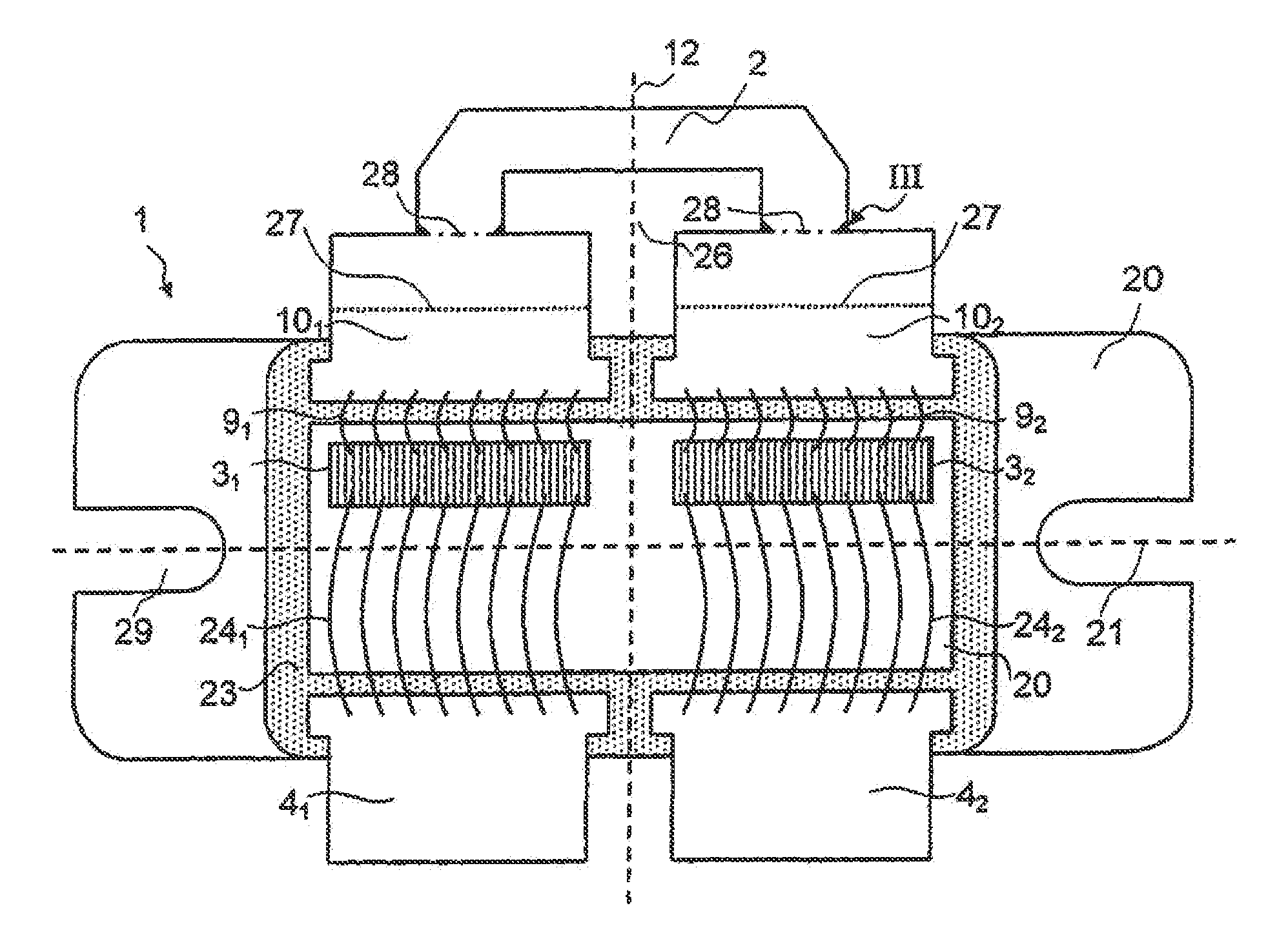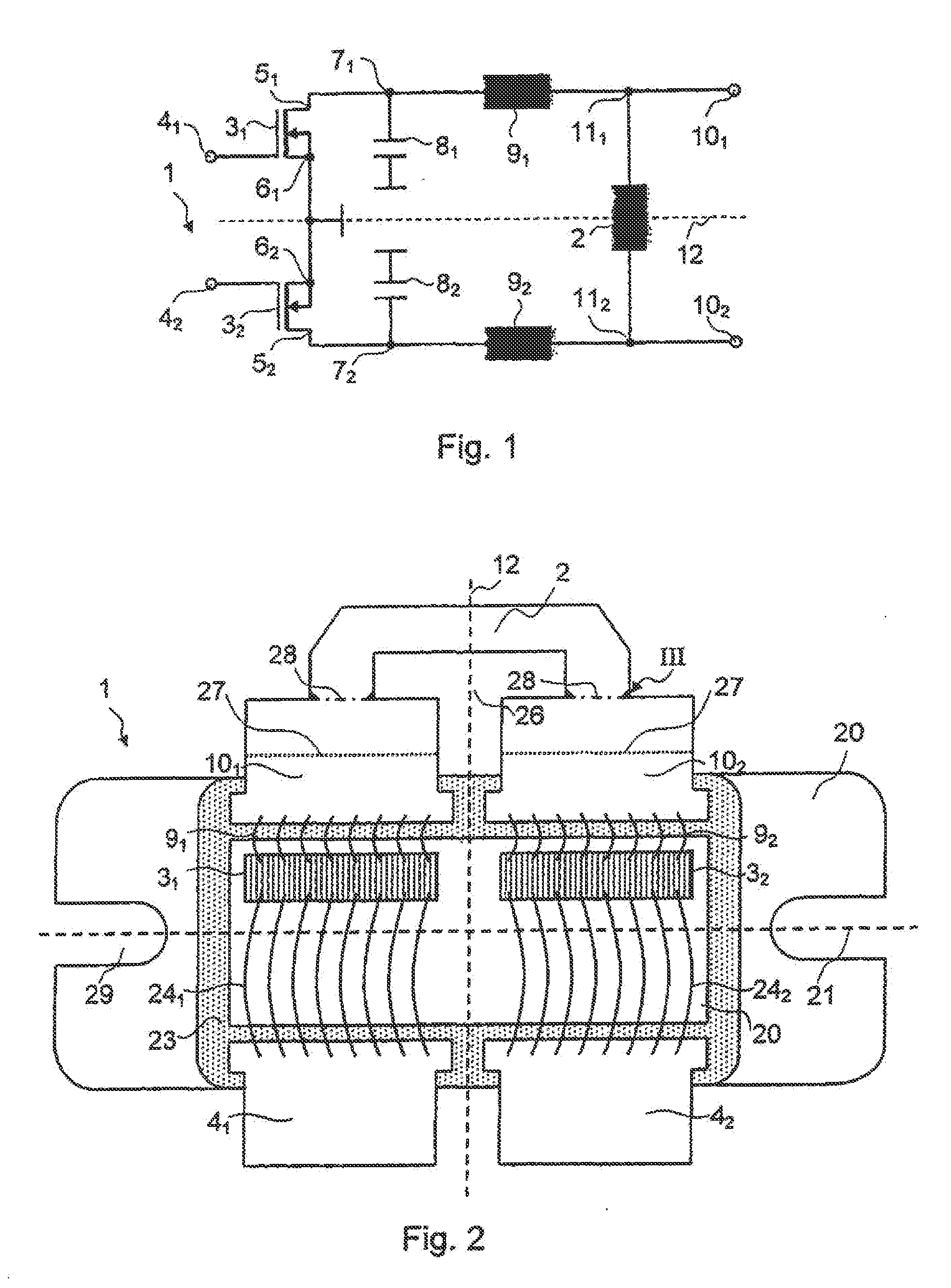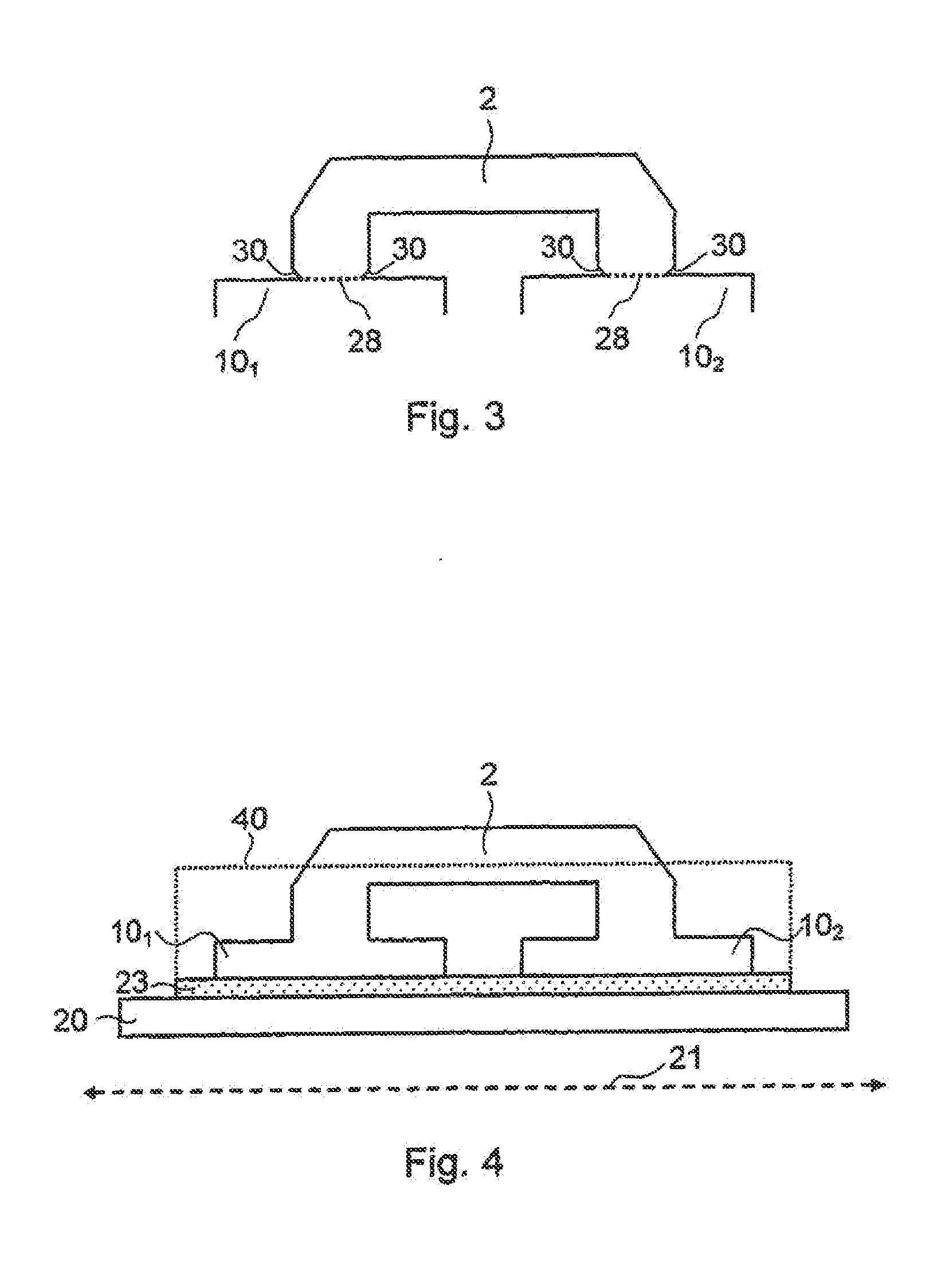Amplifier Component Comprising A Compensation Element
a compensation element and amplifier technology, applied in the direction of amplifiers, amplifiers with semiconductor devices/discharge tubes, semiconductor devices, etc., can solve the problems of reducing the bandwidth of the matching network, requiring a relatively large and expensive chip housing form, and additional insulating layers, so as to reduce couplings and avoid further undesirable resonances
- Summary
- Abstract
- Description
- Claims
- Application Information
AI Technical Summary
Benefits of technology
Problems solved by technology
Method used
Image
Examples
Embodiment Construction
[0026]The following discussion provides many example embodiments of the inventive subject matter. Although each embodiment represents a single combination of inventive elements, the inventive subject matter is considered to include all possible combinations of the disclosed elements. Thus if one embodiment comprises elements A, B, and C, and a second embodiment comprises elements B and D, then the inventive subject matter is also considered to include other remaining combinations of A, B, C, or D, even if not explicitly disclosed.
[0027]FIG. 1 shows a circuit diagram (equivalent circuit diagram) of the amplifier component 1 with the compensation element 2 according to the invention. The amplifier component 1 is structured in mirror-image symmetry about the axis 12. The amplifier component 1 provides at least two amplifier elements 31, 32, which are controlled preferably in phase opposition and arranged in a push-pull configuration. The amplifier elements 31, 32 can also be referred t...
PUM
 Login to View More
Login to View More Abstract
Description
Claims
Application Information
 Login to View More
Login to View More - R&D
- Intellectual Property
- Life Sciences
- Materials
- Tech Scout
- Unparalleled Data Quality
- Higher Quality Content
- 60% Fewer Hallucinations
Browse by: Latest US Patents, China's latest patents, Technical Efficacy Thesaurus, Application Domain, Technology Topic, Popular Technical Reports.
© 2025 PatSnap. All rights reserved.Legal|Privacy policy|Modern Slavery Act Transparency Statement|Sitemap|About US| Contact US: help@patsnap.com



